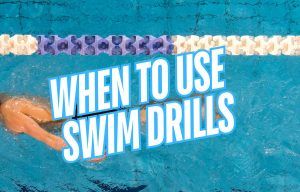
When Should Swimmers Use Drills During Practice to Improve Technique?
Wondering when to use swim drills to accelerate technique improvement? Here are some handy guidelines and more advanced strategies to deploy drills for faster swimming.
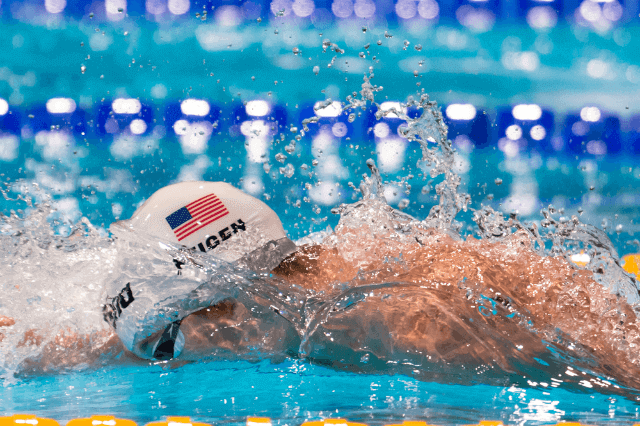
The training camp is in the rear-view. The miles have been logged. Now, standing between you and the big meet a couple meets away is the swimming taper period.
For a period of a few days, up to 3 weeks for our heavily muscled sprinting brethren, we fine tune our swimming while the volume of the work in the pool is cut drastically.
The swimming taper is a time of confusion for many young swimmers. While some swimmers feel great from the first day of taper, others take what feels like an eternity to reap the benefits.
This confusing, awesome period of training has befuddled many a swimmer.
Here is your guide to understanding the swimming taper, and how to make the best of it so that you can show up ready to destroy your best times on race day.
If you’ve shaved and tapered before you already know how great it can feel. You strap on your swim goggles and glide through the water effortlessly, you have the energy to spare, and your swimming? Well, it feels just fantastic, thank you very much.
But what is happening exactly under the surface?
Here is one way to summarize the goal of the swim taper:
“Consequently, to ultimately improve performance, the major challenge during the taper period is to maintain or further enhance the physiological adaptations while allowing the psychological and biological stresses of the overload periods to resolve.”
You want to keep your gains, build on them, and simultaneously recover from all of the hard work you have been doing.
Here is what is going down:
While it’s tempting to seek out a boiler template for our taper, the truth is that we all react differently to the swimming taper.
Whether it is our genes, our event, or our muscle composition, the way that we react tends to fall into two different camps.
1. Late Responders.
For this poor swimmers they initially perform worse than when he or she was being inflicted with max volume. This brief spell of feeling awful in the water, of swimming slower than previous training, is temporary.
This scenario has caused many a panic-driven freak-out in the pool, and experiencing it leads you to thinking that you have only gotten worse in the pool. Awesome!
The accumulated fatigue is slow to disappear, and it takes a while for this athlete to fully recover and achieve that superhuman feeling we all crave during the taper phase.
These “late responders” tend to be older, sprinting dudes who require a longer taper as a result of the added time it takes for them to get rid of the accumulated fatigue.
2. Early Responders.
In the second case, the swimmer has very rapidly adapted without this precipitous drop in performance.
In other words, this swimmer’s body has fully embraced the taper and is already feeling the hot sweetness that comes with added rest. (Much to the late responder’s chagrin.)
Younger, female distanceish swimmers tend to fall into this profile, as they are able to respond very quickly and early to added rest.
Ultimately, the way you taper and the way you perform is unique to you.
I know, I know…
You want a definitive answer to precisely how long you should be tapering in the pool.
Your taper can be typically broken down in overall volume, training frequency, and intensity.
So, in summary:
Drop the volume, keep most of the frequency, turn up/maintain the intensity.
From my own experience in the pool, I know that tapering is mentally challenging.
You feel stressed out that you aren’t feeling as good as you want in the water. You feel sluggish one day, like you are sailing over the water the next. Your mood and confidence wavers and yo-yo’s with each practice.
To combat the mental and emotional jitters that come with the taper, here are a few tips for you to help chill out a bit and enjoy the process of sharpening your swimming so that you swim fast when it matters most:
Relax.
For me, taper was always more stressful than hard training. I knew what to expect during the tough stuff, after all. Taper, conversely, was a bit of a mystery. Your training today isn’t always an accurate reflection of how you are going to train tomorrow. There is a lot stuff going on in your body. Accumulated fatigue is slowly being flushed out, type IIa fibers are being steadily recruited, and you are reaping the benefits of added sleep and energy.
Avoid last minute urges to train your brains out.
Added rest has a bizarre impact on tapering swimmers. On the one hand, they are starting to feel pretty darn good in the water, and on the other, they start to wonder if they trained hard enough. Given how great they now feel, might as well sneak in a couple extra hard workouts, right? Nope.
Trust the plan.
With all of that time spent out of the water, swimmers have the opportunity to think over the taper, their training, and wonder if it was done properly. Did they do it right? Will it work? For you late responders most especially, have faith in the process and trust the plan you have laid out for yourself. This can be tough particularly when you train with a lane-full of early responders, whose effortless swimming and boasts of “I feel, like, sooo amazing!” help fuel doubt in your own taper.
Journal your taper.
Summarizing how you are feeling at the end of the day, whether in your log book or wherever, can help you build a blueprint for how you mentally and physically react to tapering. Having this record on hand for future tapers can be invaluable, and help calm some of the see-sawing in confidence in the lead-up to your big race.
Sleep like a boss.
The easiest way to boost your performance isn’t spending hours and hours dissecting your performance and the way you feel in the water. It’s getting more sleep. With workout volume going down a bit, and the workout frequency decreasing as well, comes an opportunity to truly supercharge your body via sleep. You know that trying to get magical nights of sleep during competition won’t always be possible, so build up a sleep surplus in the weeks leading up to your big races.
Don’t go overboard on how you are feeling.
Swimming, in a lot of ways, is a mystical sport. How else do you describe something like the way we “feel” the water? Or the sensation of riding the water? Swimming is a sport that predicates much on the way we feel in the water. But the reality is, you don’t have to feel great in the water to swim fast.
Focus on the process, and forget about trying to attain an elusive “feeling.”
The taper is a personal thing.
The way you feel and perform during your taper, and consequently, in competition, is largely dictated by your training history, your specialty in the water, how you respond to the added rest, and so on.
Work with your coach to build a taper plan that works best for you and for your goals in the water.
May the swimming taper be with you.
Further Reading:

Olivier Poirier-Leroy Olivier Poirier-Leroy is the founder of YourSwimLog.com. He is an author, former national level swimmer, two-time Olympic Trials qualifier, and swim coach.

Wondering when to use swim drills to accelerate technique improvement? Here are some handy guidelines and more advanced strategies to deploy drills for faster swimming.
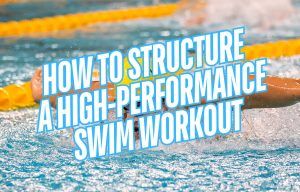
Frustrated with ineffective, unfocused swim workouts? Here is how to organize a well-structured swim workout that delivers results and faster swimming.
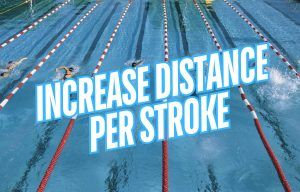
Ready to get more efficient in the water and increase distance per stroke? Here are some proven tips for increase stroke length with your swimming.
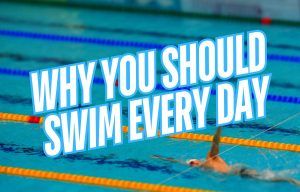
Ready to get your chlorine on? Here are nine reasons to make swimming part of your daily routine.
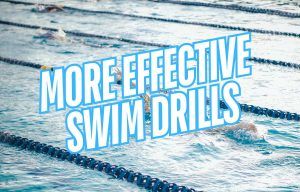
Take your swimming drills to another level with these proven tips. Next stop: better technique and faster swimming!
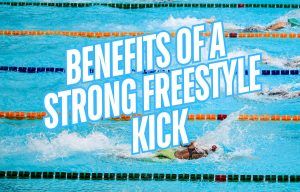
Wondering why you should be spending more time kicking? Here are the benefits of training your freestyle kick.
SITE
SHOP
GUIDES

LANE 6 PUBLISHING LLC © 2012-2024
Join 33,000+ swimmers and swim coaches learning what it takes to swim faster.
Technique tips, training research, mental training skills, and lessons and advice from the best swimmers and coaches on the planet.
No Spam, Ever. Unsubscribe anytime.
